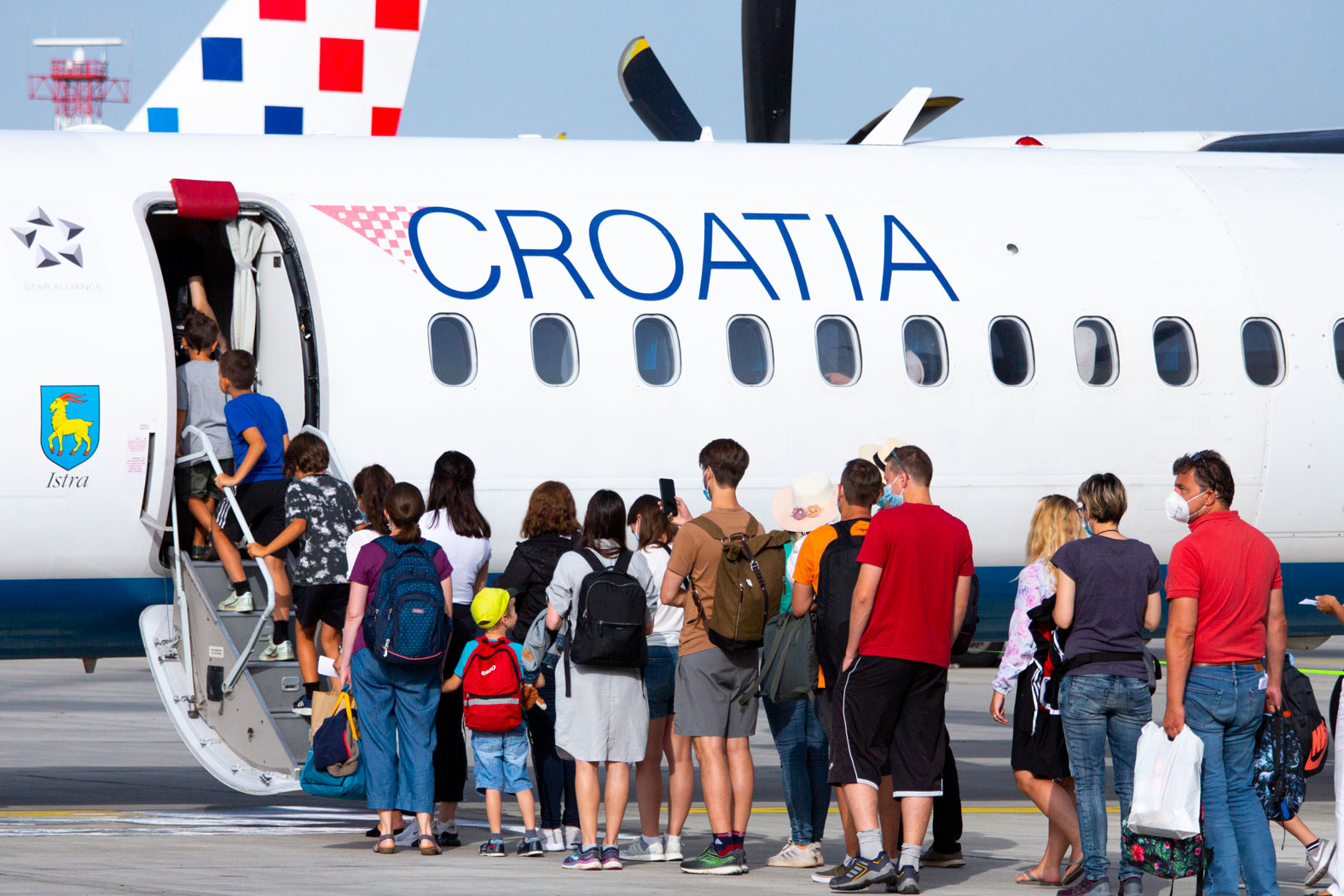Access selected deals available with budget and full-service airlines
Lock any airfare that sounds great. You don’t lose anything if you cancel it
Call us anytime for any assistance. We do not go into hibernation
Your personal and financial information stays secure with us
Croatia Airlines Ltd. is the national flag carrier of Croatia, serving as a vital link for both domestic and international travel, with a strong focus on connecting Croatia to Europe and beyond. Headquartered in Buzin, a neighborhood near Zagreb, the airline operates primarily from its main hub at Zagreb International Airport (ZAG), with focus cities at Dubrovnik Airport (DBV), Split Airport (SPU), and Zadar Airport (ZAD). Since its inception, Croatia Airlines has played a pivotal role in supporting Croatia’s tourism-driven economy and fostering connectivity for the Croatian diaspora and international travelers. As a member of the Star Alliance since November 2004, the airline leverages a global network to offer passengers access to an extensive range of destinations through codeshare agreements and partnerships.

Croatia Airlines was established in June 1991, shortly after Croatia declared independence, with the mission to serve as the country’s flag carrier. Initially operating without aircraft and facing challenging economic prospects, the airline quickly took steps to build its foundation. In 1991, it signed an agreement with Adria Airways to lease a McDonnell Douglas MD-82, enabling the launch of domestic jet services between Zagreb and Split. By 1992, Croatia Airlines expanded its fleet by acquiring three Boeing 737s from Lufthansa and launched its first international flight from Zagreb to Frankfurt on April 5, 1992. The airline also became a member of the International Air Transport Association (IATA) during this period.
The 1990s marked significant growth for Croatia Airlines. In 1993, the airline added two ATR 42s and two additional Boeing 737s to its fleet, opened representative offices across European cities, and acquired the travel agency Obzor to offer travel packages. By 1994, the airline celebrated its millionth passenger, and in 1995, it welcomed its two-millionth passenger while adding another ATR 42. A notable milestone came in 1996 when Croatia Airlines became the first airline to resume flights to Sarajevo after the Bosnian War. In 1997 and 1998, the airline introduced its first Airbus aircraft—an A320 named Rijeka and an A319 named Zadar—and joined the Association of European Airlines (AEA). By 1999, Croatia Airlines began phasing out its Boeing fleet in favor of Airbus aircraft.
The early 2000s saw further modernization, with additional Airbus aircraft joining the fleet in 2000 and the introduction of an automated ticketing system. In 2001, the airline earned maintenance and technical performance certificates from the German aviation authority Luftfahrt-Bundesamt, underscoring its commitment to operational excellence. Joining the Star Alliance in 2004 was a landmark achievement, enhancing its global reach. By 2008, Croatia Airlines ordered four additional A319 aircraft, and in 2009, it retired its ATR 42 fleet, replacing them with six Bombardier Dash 8 Q400s for short-haul routes. The airline marked a significant milestone in July 2009 by carrying its 20-millionth passenger and has consistently transported over 1 million passengers annually since 2000.
Croatia Airlines is undergoing a significant fleet renewal program, with plans to transition to a unified fleet of Airbus A220 aircraft by 2026. In October 2022, the airline announced its decision to replace its existing fleet with six Airbus A220-300s, leveraging downpayments from a canceled A319 order from nearly 15 years prior. By November 2022, plans expanded to include up to 15 A220s, with nine additional aircraft to be leased. In January 2023, Croatia Airlines finalized a lease agreement with Air Lease Corporation Clover (Ireland) for six aircraft, comprising four A220-300s and two A220-100s. In September 2023, the airline sold and leased back its entire Airbus fleet (four A319s and one A320) from World Star Aviation to prepare for the A220 deliveries. The first A220 deliveries began in 2024, with the retirement of older aircraft, such as an A319-100, starting in November 2023. The A220s are expected to reduce fuel consumption and CO2 emissions by up to 25% compared to previous-generation aircraft, aligning with the airline’s sustainability goals.
Additionally, Croatia Airlines plans to retire its six Bombardier Dash 8 Q400s and replace them with wet-leased turboprop aircraft for regional routes by 2026, aiming to become a single-type operator with the A220 for its jet services. This strategy is designed to enhance operational efficiency and reduce costs while maintaining flexibility for regional connectivity.